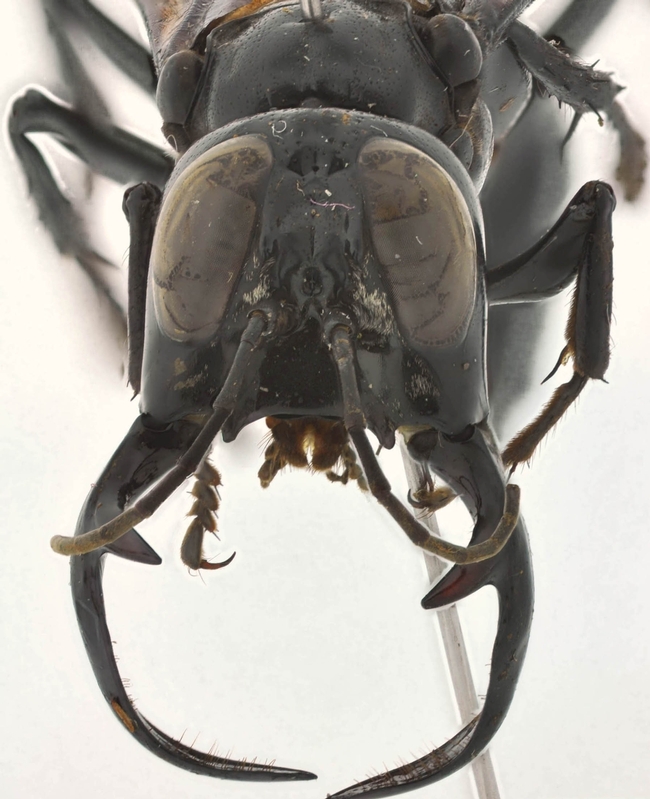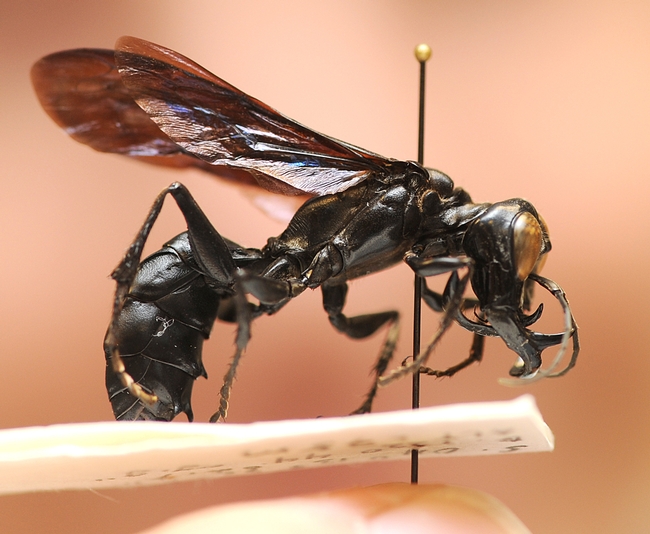
News media, the scientific world, and the general public can't believe it.
Yes, the male "warrior wasp" is 2-1/2 inches, not centimeters.
The new species of "warrior wasp" that Lynn Kimsey, director of the Bohart Museum of Entomology on the UC Davis campus, discovered on the Indonesia island of Sulawesi, is the new conversation piece in the bug world. Kimsey has nicknamed it "warrior wasp" and "the komodo dragon of wasps." Others have called it "Godzilla."
But what's really interesting besides the length is this: The male wasp is equipped with jaws longer than his front legs.
"What are those large jaws used for?" another reporter asked.
Well, little is known about the biology of this wasp, but Kimsey figures it's probably similar to wasps in the same genus; that the large jaws probably play a role in defense and reproduction.
"In another species in the genus the males hang out in the nest entrance," said Kimsey, a professor of entomology at the UC Davis Department of Entomology as well as director of the Bohart Museum, which houses a worldwide collection of more than seven million specimens.
The jaws, she said, serve "to protect the nest from parasites and nest robbing, and for this he exacts payment from the female by mating with her every time she returns to the nest," she said. "So it's a way of guaranteeing paternity. Additionally, the jaws are big enough to wrap around the female's thorax and hold her during mating."
Kimsey said she'll name the insect-eating predator--which belongs to the genus Dalara and family Crabronidae--"Garuda," a powerful mythical warrior that's part human and part eagle. Garuda is the national symbol of Indonesia.
Kimsey collaborates on a five-year $4 million grant awarded to UC Davis scientists in 2008 to study the biodiversity of fungi, bacteria, plants, insects and vertebrates on Sulawesi, all considered threatened by logging operations and mining developments. Much of the mountain was logged two decades ago and now there are plans for an open pit nickel mine, Kimsey said.
“There’s talk of forming a biosphere reserve to preserve this,” she said. “There are so many rare and endangered species on Sulawesi that the world may never see.”
Globally, how many more undescribed insects are out there? A recent article in National Geographic related that scientists have identified 1.5 million insect species, but the total number of undiscovered insect species probably ranges from "10 to 30 million."
Could be more...
Attached Images:

Large jaws of the male "warrior wasp" probably play a role in defense and reproduction, says Lynn Kimsey, director of the Bohart Museum of Entomology. (Photo by Andrew Richards)

Close-up of the male "warrior wasp," a new species discovered by Lynn Kimsey. (Photo by Kathy Keatley Garvey)